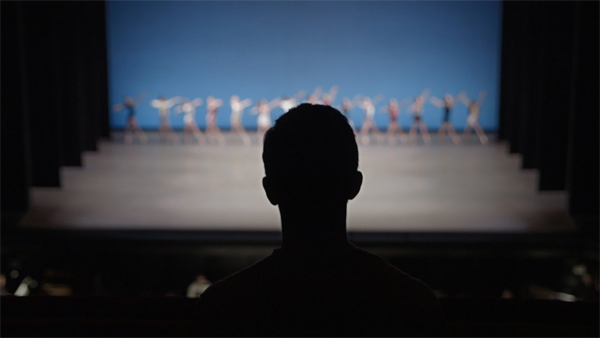Ballet 422 Review
There’s a sequence two-thirds into Ballet 422, Jody Lee Lipes’ hands-off documentary chronicling a wunderkind choreographer’s attempt to bring a ballet from idea to stage, that knocked my socks off. No, it’s not Lipes’ shot of the back of his protagonist Justin Peck’s head with dancers appearing to literally spool out of his brain space. That knocked my socks off too, of course — as did a dozen or more individual compositions — but it’s not the one I’m referring to.
It’s during a rehearsal about a week before the premiere of Paz de La Jolla, and Peck is still trying to get across to his dancers various subtleties of movement. Peck, it should be noted at this time, is not just this ballet’s choreographer, but also a dancer in the New York Ballet on the lowest level, and when he repeatedly tells one of the company’s top dancers, “Stop. No, you’re getting it wrong. Do it like this,” it clearly doesn’t go over well with anyone in the room, who outside this room, are mostly his senior.
But Ballet 422 doesn’t build to a grand confrontation. It doesn’t have a single talking head telling us what its “characters” are thinking. Lipes’ camera simply moves from one face to another, and in both those faces and those camera movements, Ballet 422 says everything it wants to say without actually saying anything at all. It’s a brilliant movie about the creative process and what a beast that is. No one, not even a creator, is safe from getting swallowed up by its complexities and scope.
Of course, the fly-on-the-wall approach to documentary filmmaking is nothing new. Frederick Wiseman has been doing this for 40-plus years, and a host of other filmmakers in recent years — Amanda Wilder’s Approaching the Elephant from this fall comes to mind — have employed the same approach. So why is it so effective here?
For one, Lipes is arguably better known for his cinematography than his direction, and as such, he has an eye for angles, colors, and movements that are as meaningful as they are beautiful. Ballet 422 is one of the best-looking, well-shot documentaries I’ve ever seen. And of course, it’s not hard to find visual beauty in a famous auditorium with these physically perfect specimens moving in unison to world-class music, but Lipes does the same thing in a costume workshop with men and women cutting fabric, or down in the pit with the conductor and his orchestra.
Then there’s the film’s final shot, which brings the entire thing home in a pretty shocking way. Documentaries are rarely built around “twists,” and while Ballet 422 definitely works on its own before its final few minutes, those scenes after Peck’s premiere punch you in the gut and bring a whole new thematic dimension to the table.
Peck is an interesting choice for a protagonist. He’s not particularly expressionistic. When he’s praising, someone or something, it’s with the same soft voice and face as when he’s criticizing someone or something. You don’t always know what he’s thinking, but the fact that the film works in spite of that again speaks of the strengths of Lipes’ camerawork. Not much is said in Ballet 422, but there’s definitely dialogue in the film. It’s just visual in nature. When Peck isn’t sharing with others what he thinks, the way Lipes captures him does.
The whole exercise requires a little more mental energy than the average person might want to put into watching a movie, but for the impatient, at least it’s only 75 minutes long. And for those happy to use their brains and analyze the text on the screen, Ballet 422 is extraordinarily rewarding and easily one of the best documentaries of 2015.
















